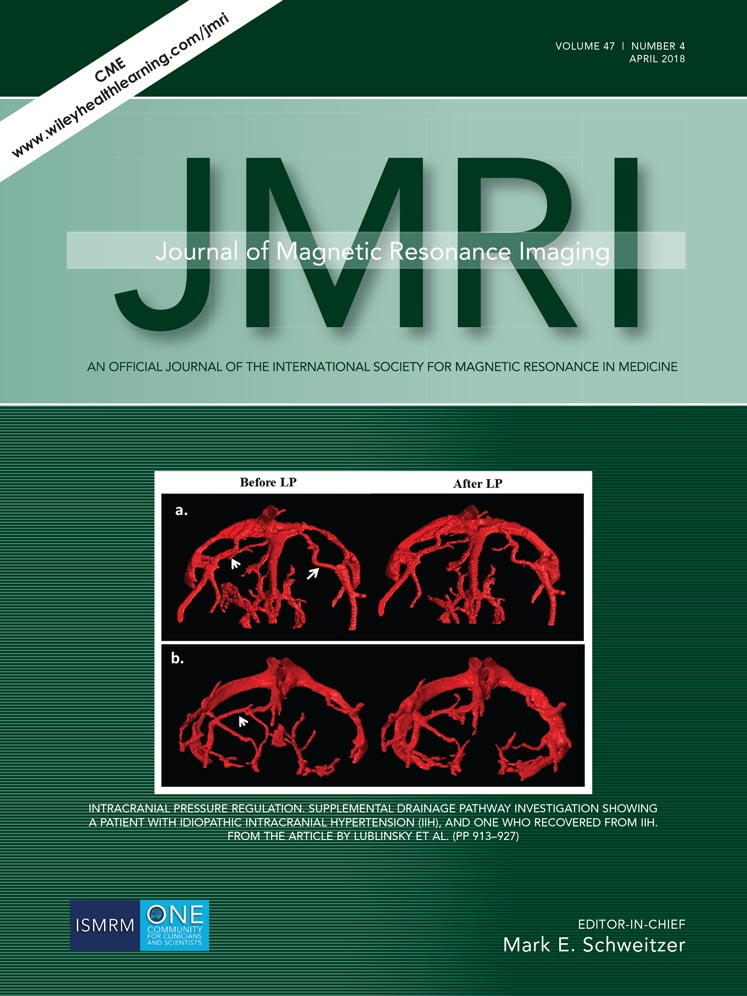Relative cerebral blood volume is a potential biomarker in late delayed radiation-induced brain injury
Abstract
Purpose
To assess whether relative cerebral blood volume (rCBV) can provide information to reliably evaluate the stages of late delayed radiation-induced brain injury.
Materials and Methods
Forty patients diagnosed with late delayed radiation-induced brain injury were enrolled. The patients were examined using a 1.5T magnetic resonance imaging (MRI) system equipped with an 8-channel head coil. An echo planar imaging (EPI) sequence was used in perfusion-weighted imaging (PWI). The location of 1H-MR spectroscopy scanning was acquired by a point-resolved spectroscopy sequence. Lesions of the temporal lobe were divided into one of two groups according to rCBV value: rCBV<1 (low rCBV [group 1; n = 45]); and rCBV>1 (elevated rCBV [group 2; n = 14]). PWI and MRS parameters, as well as morphological lesion types, in these two groups were compared. Morphological severity was assessed independently and agreed on by two imaging specialists (J.L. and H.X.S., with 16 and 24 years' experience, respectively). If necessary, a third imaging professor (Z.M.H.) with 30 years' experience resolved disagreement(s). Standards for evaluating morphological lesion types were based on previously published criteria. After testing the skewness of data, the Mann–Whitney U-test or Student's t-test was used, as appropriate.
Results
rCBV, relative cerebral blood flow (rCBF), and relative mean transit time (rMTT) in group 2 (n = 14) were significantly higher than in group 1 (n = 45) (rCBV: 1.21 ± 0.38 vs. 0.72 ± 0.32, respectively; P < 0.001; rCBF: 1.13 ± 0.02 vs. 0.74 ± 0.04, respectively; P < 0.001; rMTT: 1.10 ± 0.26 vs. 0.96 ± 0.20, P < 0.001). The levels of choline-containing compounds (CHO) / creatine (Cr) and CHO/N-acetylaspartate (NAA) in group 1 were significantly greater than in group 2 (CHO/Cr: 1.89 ± 1.83 vs. 1.22 ± 1.31, respectively; P = 0.016; CHO/NAA: 1.85 ± 3.50 vs. 1.17 ± 0.75, respectively; P = 0.022). More severe morphological lesions were present in lesions with low rCBV compared with elevated rCBV (overall severity: 7.00 ± 4.25 vs. 5.00 ± 5.13, respectively; P = 0.029).
Conclusion
Elevated rCBV accompanied by a more conservative metabolic pattern and milder lesion(s) may represent a less advanced stage in the development of late delayed radiation-induced brain injury.
Level of Evidence: 4
Technical Efficacy: Stage 3
J. Magn. Reson. Imaging 2018;47:1112–1118.




